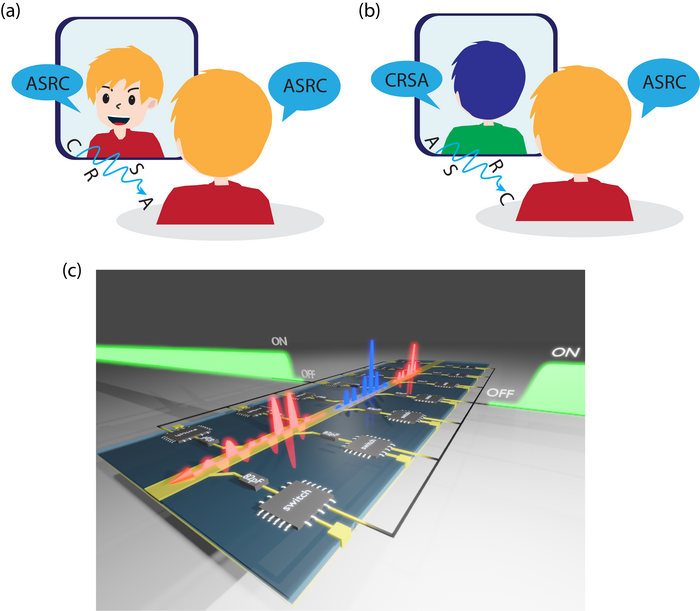Ordinary wave reflection off a suitable boundary is a familiar part of life. We witness it every day when we look in the mirror, hear it in echoes, and can watch ocean waves bounce off a breakwater if we want to see the process on a more graspable scale.
Time reflections, also known as temporal reflections, are something different, requiring an abrupt shift not just in the wave, but in the medium through which it is traveling. As occurred so often in the mid-20th century, theoretical physicists ran ahead of their experimental counterparts, discussing the workings of the phenomenon before it had been observed. Now, it appears they have caught up.
By switching the dielectric constant of a metamaterial, physicists have time-reflected electromagnetic waves being carried within it for the first time, describing their results in Nature Physics. They didn’t turn back time Cher-style, but the signal carried by the waves underwent both a reversal in order and frequency lengthening. Besides confirming a possibility theoreticians have been toying with for 60 years, the work could allow greater control over the way waves and matter interact. It could prove useful in photonics, the quest to replace electricity in information technology with light, allowing for an astonishing increase in speed in computers and cell phones and wireless communication.
Time reflections produce a shift in frequency, which is relatively easy to understand, and a wave reversal in time, which is not. The first involves something like the Doppler shift, where wavelengths are stretched or contracted, most familiar in the redshift seen from distant galaxies. Light that is blue before the reflection becomes yellow, green light becomes red, and so on. Harder to get one’s head around is the way the end of a signal is reflected first, so that we hear the signal backwards, like old-style conspiracy theorists who thought they could detect satanic messages by spinning rock records the wrong way.

In a spatial reflection (a) we see our face reversed left to right. In a temporal reflection (b) we would see the back of our head because the wave order is reversed, and the colors would be changed thanks to frequency shifting. (C) Schematic of the experimental setup, with a control signal changing the medium through which a wave passes fast enough to induce time reflection.
Image credit: Andrea Alù
The phenomenon of time reflection is associated with time crystals, whose atoms form patterns that repeat in time as ordinary crystals do in space. The surprising discovery of examples of these objects has raised interest in related concepts. However, time reflection requires the properties of the medium to change at more than twice the frequency of the wave. The exceptionally high frequencies of visible light, let alone anything in the UV or X-ray part of the spectrum, make this a challenge, although it has been demonstrated in water waves.
“The key roadblock that prevented time reflections in previous studies was the belief that it would require large amounts of energy to create a temporal interface,” said co-first author Dr Gengyu Xu. “It is very difficult to change the properties of a medium quick enough, uniformly, and with enough contrast to time reflect electromagnetic signals because they oscillate very fast.”
The team turned to metamaterials, substances with properties never seen in nature.
“Our idea was to avoid changing the properties of the host material, and instead create a metamaterial in which additional elements can be abruptly added or subtracted through fast switches,” Xu said.
The team confirmed their achievement by combining time-reflected and time-refracted versions of the same signal and observing the interference.
An earlier version of this article was published in March 2023.
Source Link: What Are "Time Reflections" And Why Are They So Promising In Tech?